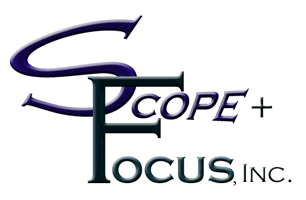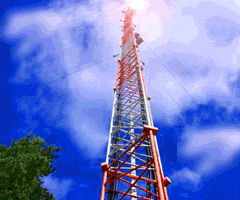


 |
 |
 |
| |
||
Low Power FM |
||
The filing window is closed; the commission has begun its review of Low Power FM (LPFM) applications. The construction permits are being granted. Now comes the fun part: building the station. Before you pull your hair out, just check out the following few paragraphs. Call us (773 248 5100 or the company cell, 904 923 6687) if you'd like to ask any questions or want clarification. It's not going to cost you anything but a little of your time and it may save you a lot of money and headaches. It is fairly easy to assume that because of the nature of the LPFM service, cost is a major concern, as is reliability and durability. After all, it has to stay on the air and many operators may have little or no experience handling radio gear. Here are some points to keep in mind: When thinking through equipment, first plan your programming! If you're doing 24x7 live talk, you could get away with a couple of mics, a mixer, headphones, processor, transmitter and antenna. You could, but even with such a simple format you'll want to be able to pre-produce program intros and closings, station ID's, PSA's and information about donors and support. That will mean a separate production area with its own inputs like mics, music playback (CD, .mp3 players, a quality computer) and possibly a phone input/system to prerecord calls. And, in any case, you'll need to be EAS compliant. And speaking of the phone, if you want to take live calls on air, you'll need that gear - probably a hybrid, but not necessarily - for the air studio. Along those lines, you will probably want to protect yourself against fines with a program delay unit that allows you to terminate callers or other programming should their words go outside the bounds of acceptability for the time of day. Of course, it gets more complicated as you add programming types. A local concert will require remote equipment - mics, stands, mixer, headphones and a recorder. Want to do it live? Well, that means a way to get that concert back to the studio. What about live, in-studio music? That's a challenging format since it usually calls for a larger studio, multiple microphones, and a more sophisticated mixing console. You may choose to automate part of the day. It may be voice-tracking by your own talent or by an outside feed. Programming may come from a digital line or satellite. It will need to be downlinked/downloaded and fed out over the air. Each format has its own challenges - and costs. And that means working hard and working smart to keep those costs down. It means doing the research to find that a $200 XYZ box will do just as good a job as a $1500 unit. Quality is quality and LPFM shouldn't be shortchanged. But spending more than you need to is a waste. Then you need to consider the transmission gear. The audio processor (yes, you'll need one to ensure compliance with FCC rules), the transmitter, studio-transmitter link and remote control (if the transmitter is separated from the studio), transmission line, tower and antenna. And don't forget to consider lightning and static discharge protection. Protection doesn't have to be costly and it's hard to dedicate funds to equipment that doesn't affect/improve the sound of your station. Of course, if spending the money on lightning elimination keeps the station on the air undamaged through lightning assaults, it actually does affect the sound. A part of all of this is security...to prevent theft and vandalism and to make sure the airwaves aren't accessed by unauthorized individuals. Here, in a nutshell is a checklist for getting your station built:
Give us a call. We can help you lay out a "signal path" diagram and compile an equipment list. And we love to talk about the challenges of getting more for less. We have the contacts with broadcast suppliers to get discounted prices - and we don't mark them up! And, as important, we can get it all installed properly and in compliance with FCC rules, help with license filing, then keep it running reliably with 24x7 field service ability. LPFM is providing valuable services across the country. When you receive your CP you'll be on the road to becoming a part of it. |
|||